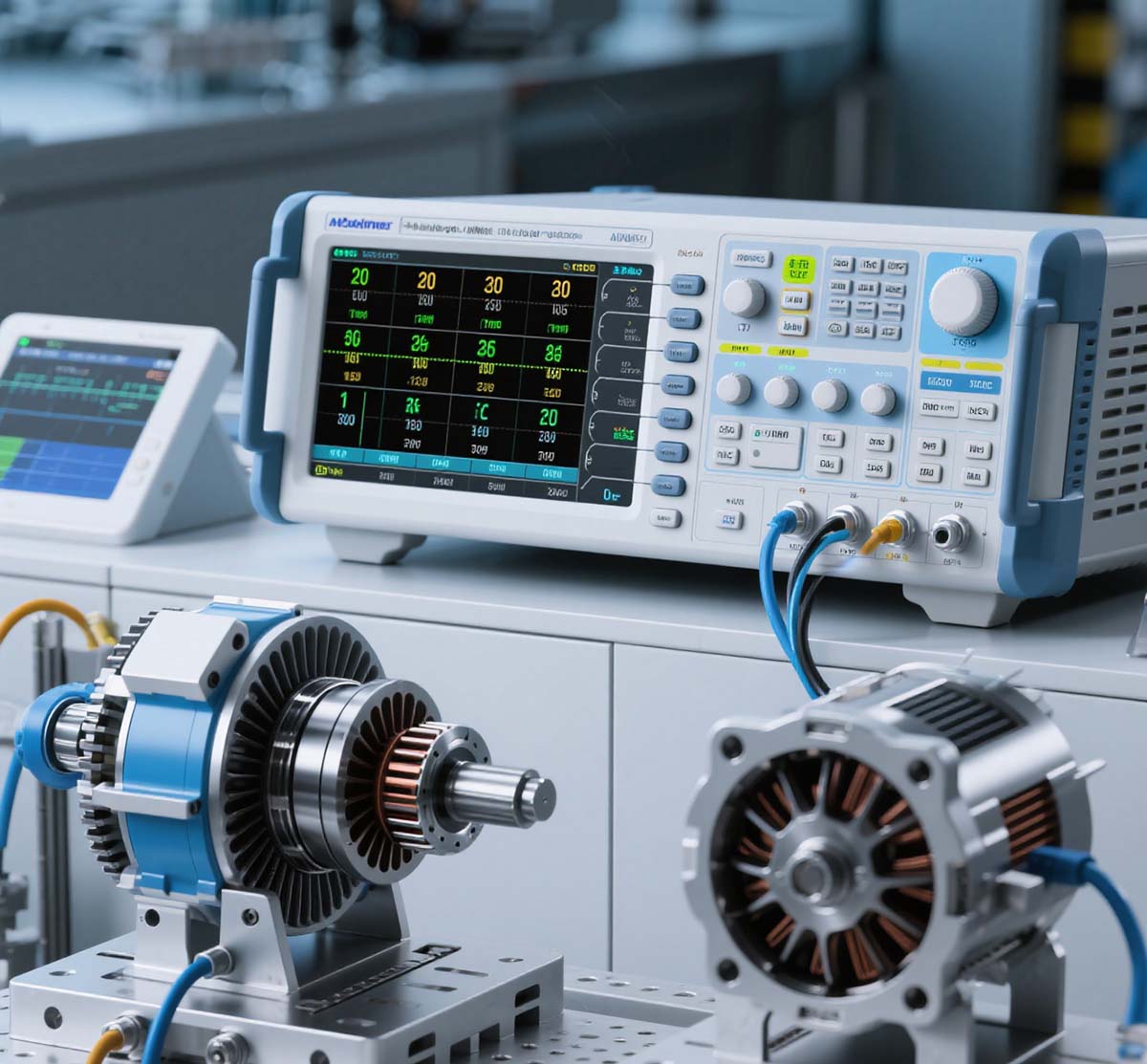As the global penetration rate of new energy vehicles exceeds 35% (according to IEA data in 2025), electric drive system testing faces three core challenges:
1. High dynamic response requirements: Transient switching of motor speed 0-15000rpm requires millisecond-level data capture.
2. Complex energy efficiency evaluation: System efficiency under 800V high-voltage platform needs to be accurate to ±0.1%.
3. Multi-physics field coupling: Need to synchronously correlate electric power data with mechanical parameters such as temperature/vibration.
Synchronous multi-channel measurement: It is necessary to simultaneously collect high-precision synchronous data of motor controller input power (DC), motor output power (AC), and mechanical power (torque/speed), and calculate system-level efficiency (such as the product of inverter efficiency η₁ and motor efficiency η₂). So, a high precision multi-channel power analyzer is necessary to achieve this.
Dynamic working condition verification: Covering power flow analysis of transient processes such as acceleration and energy recovery, verifying the symmetry of bidirectional operation efficiency.
Complex system adaptation: Supporting real-time linkage testing of front and rear axle power of dual-motor four-wheel drive system to avoid data splicing errors of multiple devices.
1. Hardware configuration requirements
Channel expansion capability: at least 6 power channels (such as DC bus + dual three-phase motors), supporting power above 250kW and 500A current sensors;
Accuracy indicators: basic voltage/current accuracy ≤ 0.05%, frequency bandwidth ≥ 500kHz (such as German GMCI LMG671 series);
Synchronous sampling: all channels use a unified time base, sampling rate ≥ 1MS/s, to ensure accurate capture of phase difference.
2. Key parameter measurement matrix


3. Typical test scenarios

4. Software analysis function
Efficiency MAP diagram generation: Draw the motor's efficient working range based on the torque-speed curve;
Loss quantification analysis: Separate power loss components such as iron loss and copper loss to locate energy efficiency bottlenecks;
Durability test: Continuously record charge and discharge cycle data and support semi-automatic long-term operation verification.
R&D optimization: Shorten the verification cycle of power electronics topology innovation by more than 50%;
Production line detection: A single device replaces multiple instrument stacks to reduce testing costs by 30%;
Standard compliance: Meet ISO 7637 electromagnetic compatibility and GB/T 18488 motor test specifications.
*Please fill in the required information carefully, and we will contact you within 4-8 hours.

 TEL:+86 532 83995188
TEL:+86 532 83995188
 PHONE:+86 177 5322 5039
PHONE:+86 177 5322 5039
 E-MAIL:service@ainuoworld.com
E-MAIL:service@ainuoworld.com
 ADDRESS:No. 134 Zhuzhou Rd, Laoshan District, Qingdao, China
ADDRESS:No. 134 Zhuzhou Rd, Laoshan District, Qingdao, China
Copyright©2025. Aino Instrument Co., Ltd All Rights Reserved.
Powered by:WDL